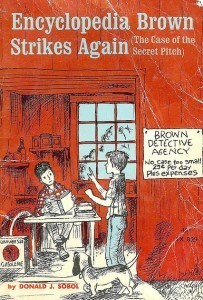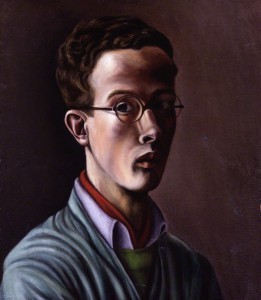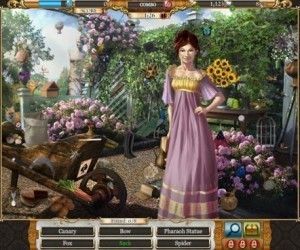The Paris Review's Blog, page 900
July 18, 2012
Drama, Tantrums, and Bird-Watching
High drama at the Oxford American. What exactly is going on?
A (very) strong month for booksellers.The beach-read effect?
A list of writers who throw tantrums.
The great Larry McMurtry book sale.
An American Writers Museum?
“But the thing that bugs me most about Jonathan Franzen is that he’s becoming the public face of bird-watching.”
July 17, 2012
This Saturday: Help St. Marks Books Relocate
Despite your best efforts, it looks as if our faithful friends at St. Mark’s Books are going to lose their lease. That’s the bad news. The good news—at least, if you care about keeping bookstores in lower Manhattan—is that they are trying to find a cheaper location in the East Village. Help them raise money for the move: join the “cash mob” at three o’clock this Saturday afternoon. The first five customers who spend $500 or more will receive a free one-year subscription to The Paris Review.
Return Engagement: An Interview with Rebecca Gates
Image by Dan Sharp
Rebecca Gates’s former band, the Spinanes, released their first album, Manos, in 1993. Indie pop was in its halcyon days, and Manos reached number one on the college charts. Like her friends and colleagues in the Pacific Northwest music scene Elliott Smith and Lois Maffeo, Gates sang opaque, suggestive lyrics in a gentle and ruminative voice. But her dense guitar and Scott Plouf’s propulsive drums (they were a duo, with no bassist) were also inspired by punk. Strand, their 1996 follow-up, expanded their musical palette with experimental sounds and more complex instrumentation. After Plouf left the band, Gates moved to Chicago, where she recorded a third and final Spinanes album, 1998’s Arches and Aisles, with help from members of such simpatico post-rock bands as Tortoise and the Sea and Cake.
Gates’s solo debut, an EP called Ruby Series, came out in 2001. Eleven (agonizing, for fans like myself) years later, she is releasing her first full-length album with her open-ended backing band, the Consortium. Spacious and dreamy, The Float was recorded in fragments over a period during which Gates lived in New York, Rhode Island, and Portland, her current residence. Over the course of the last decade, she has also pursued an interest in sound art that led to a number of curatorial projects, including the Marfa Sessions, a set of site-specific sound installations installed across the Texas town.
We met for dinner in early May, when Gates was visiting New York to work at the Frieze Art Fair.
Were you unhappy to stop making music?
I was beyond burnt out at the end of 2001. I’d completed a tour opening for Stereolab. I had played with an amazing band—great shows, great friends. Ruby Series had good reviews. And I thought, I can’t do this. I’m so tired and I don’t have any money or time. I like common sense, and it just wasn’t adding up.
I never stopped playing live shows, and never stopped writing, but I stopped doing the business side of it, and stopped that cycle of finishing a record and having people say, well, now you have to do something different to maintain our interest. I was relieved to step away from that craziness.
Why did it take you so long to come back to recording?
There are a lot of answers I feel comfortable giving to that question, and they’re all true—personal interests, costs of recording, the changing business. But I also lost five close friends in a really short span of time.
Were they all sudden?
Different. Suicide, cancers, bicycle accident, mishap. And then I’d had a relationship end. I think it took me a long time to get my hand back on the rudder. I don’t want to position this as my “processing death” record. If you make a record for as long as I did, it’s going to be about a lot of different things. But that’s what the last song on the album came out of: how many more times am I going to get that call?
When were the songs on The Float recorded?
I did the first few in 2004, just to get them out. I thought, I don’t have a label, I don’t know what’s going to happen, but I have the money to pay for a week of recording and I’m just going to go do it. I set them aside, and then two years later I would do a day, and then two years after that I would do three days. I didn’t really start working on the record in earnest again until 2008, and even then it was off and on. In a lot of ways I wasn’t sure that it needed to exist.
Why did you doubt that?
I was turned down by so many labels. I was used to that framework. I thought, if no one wants to help me put out my record, maybe it shouldn’t come out. Maybe there’s no reason for people to hear it.
What spurred you to continue?
At one point I went into a kind of deep retreat on the coast of Rhode Island, and I ended up sitting in on a class that the avant-garde composer Alvin Lucier was teaching at Brown. He’s classically trained, and in the early sixties he went to Italy and saw a concert by John Cage and his practice took a total left turn. And I had never been around someone who was so committed to sound and who was so whimsical about it. I just needed to know thinking about music like that was possible.
I love Battles, the New York band—they actually played one of their first shows opening for me. I went to see them play in Paris, when Tyondai Braxton was still with them. They all asked me about the record, and he said, “I’m really looking forward to hearing it because your records are never the same.” And that gave me the freedom to feel that I could just make whatever I wanted and not be beholden to anything. There were little moments like that over the years and they added up. The album slowly started to have context.
Did you have a particular vision for the record?
I rarely have a vision when I start a record. It’s more that I don’t hear something I want to hear, and I try to make it. I think one of the reasons why Manos sounded so different was not only because there were only two of us in the band but because there was no reverb on that record. I felt at the time that many female vocalists were really girly and breathy, and there was a lot of lazy reverb. I wanted us to do what we did as straightforwardly as possible. With Strand, our second record, we wanted to bring the sound of the room in, to give it a sense of space. For Ruby Series I wanted to make a record that was all about staying up all night and being in love.
With the new album, I knew that I wanted a rock and roll record. When I started playing solo, I became obsessed with how little sound I could make live. How quiet can I be and still have the shape of the song exist? I also wanted to bring in some of that stillness.
How does it feel putting an album out in 2012 as opposed to back in the 1990s?
Everything feels really fast right now. You play a show and the next day it’s posted on YouTube. Which is fine, but I have really bad hair days. I don’t have the money for a valet, but I’m thinking that might be a priority.
People have said that when your record comes out, it will be talked about for a week and then no one will talk about it. And I’m happy that I was able to make records at a time when that speed wasn’t available, because that’s not really the kind of music that I want to make. Having the opportunity to utilize that kind of speed is kind of amazing. I just want everyone to consider the implications. I get into those conversations with people who ask, “Why are you charging nine dollars for your download? It should be free.” And I think, how much money did you just pay for that shitty magazine that has bikini-clad girls printed on virgin paper? You destroyed a forest, and you’re forwarding weird femininity and gender issues. You’re going to read that for a month. If you like my record, you’re going to listen to it for years.
Do you have a sense of who your audience is now?
Not at all. I’m super fortunate—I meet people who say, “I remember you,” or “I got dressed to you every day in high school.” And then on the other hand we just played a show in Paris, and a woman came up to us and said, “I have no idea who you are or where you came from, but you guys are amazing.” That was really nice to hear.
What do you want to do next musically?
My friend Ji Tanzer plays drums on a couple of songs on the record, and one of the things that we bonded over is our love for the jazz singer and pianist Shirley Horn, who passed away a couple years ago. There was this one record that she made, The Main Ingredient, that was just recorded in her kitchen. We want to make that kind of sit-around record. Even though I love going into the studio, my living room does sound really great!
One thing that’s fun for me coming back to this is realizing that I’m a lifer. I’m pretty sure I’m not going to be able to do this in a way that I did before, where I was focusing on it all the time. I don’t know if I even need that. But I definitely want to have it be present in my life, for the rest of my life. There’s an idea in the culture that you choose to be a writer or a musician. People have said to me, you don’t have to make music. Well, actually, I do. I stopped for a while, and I have no choice.
The Float is available from parcematone.com.
Wharton Erotica, Peculiar Pulp, Encyclopedia Brown
Encyclopedia Brown author Donald J. Sobol has died at 87.
When Edith Wharton penned erotica.
8-bit illustrations of short stories’ opening lines.
Peculiar pulp art.
“Don’t deny the change. Direct it wisely.” How best to employ libraries.
July 16, 2012
Desert Moon: Breaking Bad in the American Southwest
There’s a moment when thunderclouds smother the sunset and the chile ristras begin to sway, when bits of smoldering earth intertwine with invisible rain, and you’re tangled in tumbleweed magic. Everything is burnt orange and cactus green, clay-tinged and warm. There’s mystery disguised as menace, comfort in spite of storm, and the sky gives off a phantom light that makes the concrete seem cinematic. This is the desert Southwest, my homeland, also known as Breaking Bad country.
If you’ve made the television journey with Walter White—from tightey-whitey chemistry teacher to hairless drug kingpin—you’re already familiar with the show’s desert setting of Albuquerque, New Mexico. It acts as a silent character that, to me, is also its most important.
Read More »
Through a Cloud
Self portrait by (Maurice) Denton Welch, oil on hardboard, circa 1940-1942, National Portrait Gallery.
When I was twenty, I traveled to London to study for a year at University College. It was shortly after 9/11 and the flight was so empty that I was able to lie down across four seats and sleep. My dorm turned out to be a dreary, brutalist, self-catered affair in Camden Town, and it would take me a while to work out that the pervasive gloom that dogged me day in and out was a product not of my environs but of the onset of the clinical depression which I would not have diagnosed and treated for another two years.
I’m sure I romanticized my former self during this time, but I knew I had changed. I had always taken pleasure in a thousand small things every day: a good cup of coffee, a furious baby, a funny typo, a teenager who couldn’t smoke a cigarette properly, a bizarre exchange on the subway, the fact that neck ties serve no practical function. Read More »
Jane Austen, The Video Game; Katniss, the Baby.
Quoth the Daily News , “It is a truth universally acknowledged that a single individual in possession of a Facebook account must be in want of social interaction.” Meet Jane Austen’s Rogues and Romance.
Oh, and Jane’s ring sold for a bundle.
How to write a cookbook.
Grammatical shockers in history.
The evolution of the Arabian Nights .
The good news: . The bad news (for the babies): the literature is Game of Thrones and The Hunger Games.
July 13, 2012
What We’re Loving: Toomer, Kusama, and Train
Yayoi Kusama, Self-Obliteration No. 1, 1962–67, watercolor, ink, graphite, and photocollage on paper, 15 7/8 × 19 13/16 in. Collection of the artist. © Yayoi Kusama. Image courtesy Yayoi Kusama Studio Inc.; Ota Fine Arts, Tokyo; Victoria Miro Gallery, London
Six years ago I wrote a little article about my favorite Washington, D.C., novels—and was roundly chastised for leaving Cane off the list. First published in 1923, Jean Toomer’s modernist classic isn't exactly about Washington, and it isn’t exactly a novel. It’s an early response to the Great Migration, in linked stories and verse, that moves from rural Georgia to U Street and back again. Still, it may well be the District’s greatest hit. It is pure lyricism, perfect for these late summer nights. —Lorin Stein
I caught a preview of the Yayoi Kusama retrospective that opened at the Whitney yesterday. If you’ve heard of her at all, it’s likely for her signature polka dots (or perhaps for her recent collaboration with Louis Vuitton). As a video in the show attests, her use of those dots was compulsive and obsessive: she sticks them on prone nudes, reclining cats, distracted dogs; they litter the ground, the wind, the sky. But most intriguing are her very early paintings, in which you can see Kusama working through the early masters of Western modernism. Of particular interest was a very odd painting incredibly titled Accumulation of Corpses (Prisoner Surrounded by the Curtain of Depersonalization), in which waves of red curtain folds pinhole a scene of bare trees. As chance would have it, the painting perfectly represented the book I’ve been reading, Windeye, Brian Evenson’s adroitly creepy new story collection. It’s kismet! —Nicole Rudick
What is glamour and how does one attain it? Is it curated, cultivated—or does it just arrive, like inspiration? Jim Lewis’s article for W magazine, “Face Forward,” is the perfect starting point for anyone intrigued by (or dismissive of) this fleeting, shimmering quality. For me, if beauty is an image, then glamour is imagery: aesthetics in the service of narrative. What is glamour, after all, but good storytelling? Presenting a glimpse of a lifestyle—or perhaps, a way of being—other, elsewhere, and then gone. —Alyssa Loh
Read More »
TPR vs. High Times: Smoke ’Em If You Got ’Em
Team |1|2|3|4|5|6|7 Total
TPR |4|0|0|4|0|0|4 12
HT |0|2|4|0|0|0|4 10
What a difference a week makes. In the last installment of these notes I detailed Team TPR’s slow descent into mediocrity, a juicy tale rife with last-second losses and clubhouse turmoil. Today, thankfully, I come bearing news of a different color: the color of victory (whatever that is—green?). In what was generally classified as “a bit of an upset” by the national media (and a delicious bit of revenge for last year’s dust-up), David (TPR) felled the brutish Goliath (High Times), armed with nothing more than the competitive spirit and a handful of ringers, including one of Bard baseball’s best—and the former collegiate roommate of now super famous hoopster Jeremy Lin.
July 12, 2012
Crawling Out of the Cribs
Heading to the Cribs show at Santos Party House, I could feel my brain wired like a motherboard. I was coming off of a two-week caffeine withdrawal, freshly rejuvenated by two black coffees. My fingers danced with anxiety as uncontrolled memories popped into my head. I thought about my camp counselor, Jared, who slap-boxed the kids in our cabin. If one started to cry, he’d play his usual trick: forced flatulence. He’d curl up on the floor like Grotowski’s cat, red faced, concentration veining out of his forehead, sucking in air, ass cheeks flexing until he let it rip. Inevitably, the kid would stop crying and Jared would slap-box another camper.
I thought about my first Cribs show. In 2006, they opened for Death Cab for Cutie and Franz Ferdinand at Hammerstein Ballroom. I was supposed to take my high school girlfriend, but she had called me that day to let me know that she and my best friend of fourteen years had been playing a little game of hide the loose ends. I went alone and screamed along to “Mirror Kissers.” Read More »
The Paris Review's Blog
- The Paris Review's profile
- 305 followers












